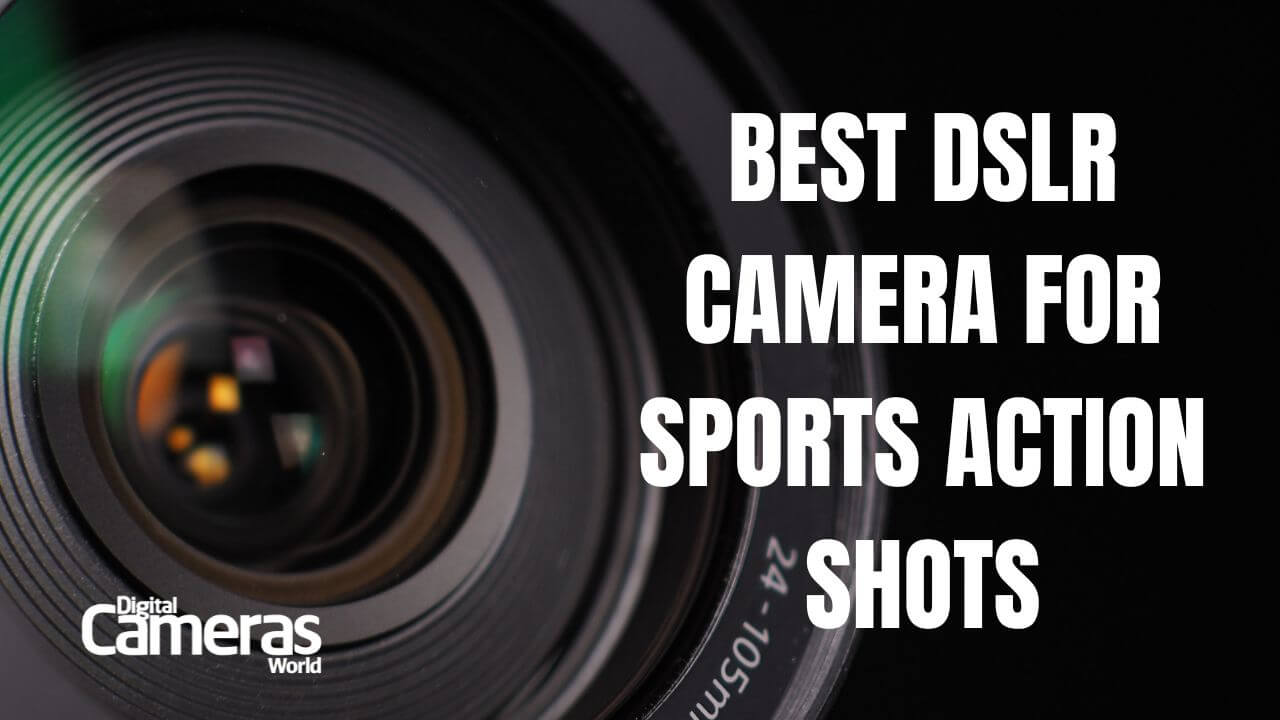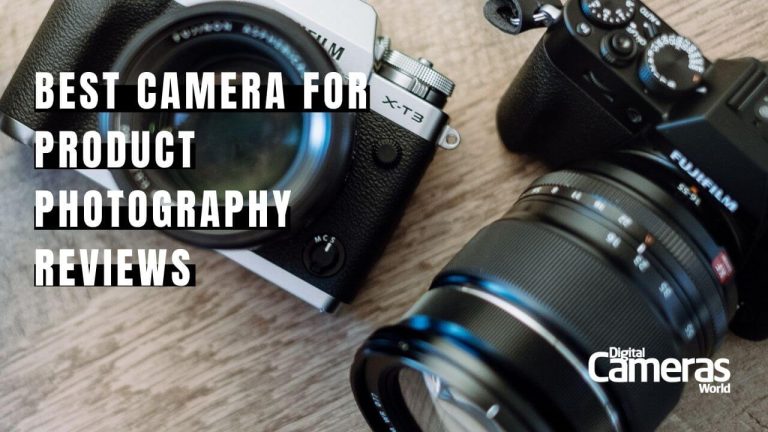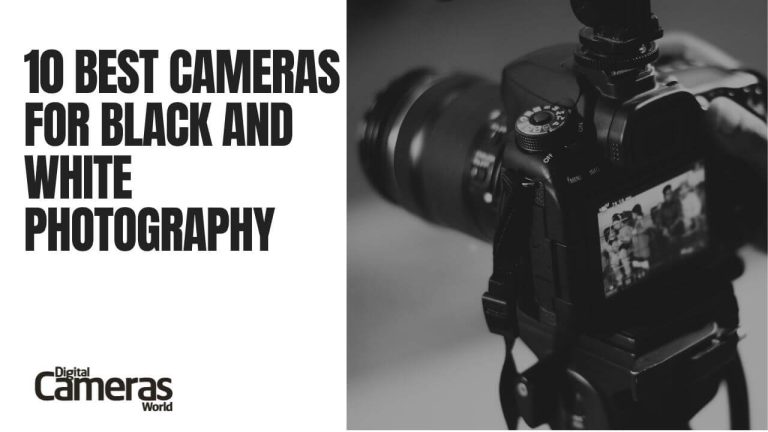10 Best DSLR Cameras for Sports Action Shots 2024
When selecting the optimal camera for capturing sports action shots, it’s imperative to focus on specific specifications and features tailored to this demanding genre. Certain fundamental principles remain constant whether you’re capturing moments at a local five-a-side match or on the sidelines of a grand stadium event.
Some photographers prefer the versatility of an interchangeable lens system coupled with a sizable sensor, while others prioritize portability and lightweight equipment.
Fortunately, the market caters to both preferences, accommodating those seeking a compact camera with a large sensor and the flexibility to swap lenses. It’s not merely about choosing the top-tier camera for professionals; instead, it’s about finding the ideal DSLR or mirrorless camera that suits the needs of sports photography enthusiasts, particularly beginners.
Top 10 Best DSLR Cameras for Sports Photography
In this quest, certain features take precedence over others. Factors such as burst rates, autofocus speed, and high-ISO performance are crucial for effectively capturing fast-paced sports action with clarity and precision. A camera’s ability to deliver rapid frame rates and a reliable autofocus system capable of tracking moving subjects seamlessly ensures that no crucial moment goes undocumented.
Whether you opt for flagship models like the Nikon Z8 / Z9, Sony A9 III, or Canon EOS R3, renowned for their unparalleled performance, or consider budget-friendly options like the Canon EOS R10, the ultimate goal remains the same: to equip oneself with a camera that excels in capturing the electrifying moments of sports action with finesse and reliability.
1. Canon EOS 7D Mark II Digital SLR Camera
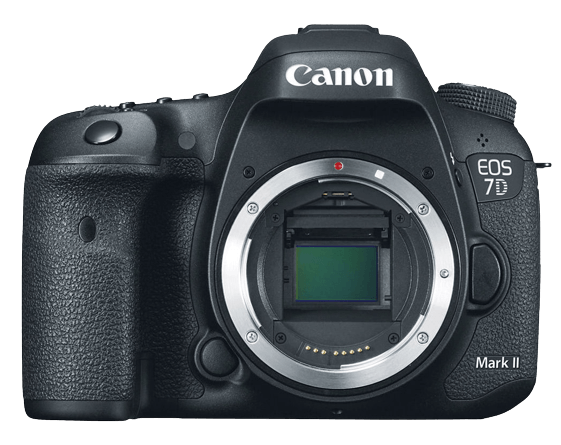
- 20.2MP APS-C CMOS sensor
- 10fps continuous shooting
- 65-point all-cross-type autofocus
- Built-in GPS
- 1080p video recording
As suggested before, you should get it with the EF-S 18-135mm IS STM lens, which is long enough for sports photography. To make it less expensive, consider getting a utilized 7D II body; however, you will get an 18-135mm lens. I suggest Canon EOS 7D Mark II, most notably for those picture takers keen on the camera’s stable activity in any conditions.
Above all, we discuss proficient reportage shooting and related sorts, including activity, sports, and experience photography. Mark II is likewise an astounding working tool for a wedding picture taker. Admirers of regular photography ought to likewise pay attention to this model. It is one of Canon’s best DSLR cameras for sports action shots.
Pros
- Advanced ergonomics
- fine-tuned autofocus
- burst rate up to 10 fps
- large buffer in JPG
- built-in GPS
- high battery life
Cons
- no touch control
- fixed LCD screen
- no 4K video
- comparatively high price
2. Nikon D500 DX-Format Digital SLR

- 20.9MP DX-format (APS-C) sensor
- 153-point autofocus system
- 10fps continuous shooting
- 4K UHD video recording
- Built-in Wi-Fi, Bluetooth & NFC
The Nikon D500 DSLR Camera, a new addition to the market, offers flagship performance in a compact DX-design body. Its standout features include a 20.9MP DX-Format CMOS Sensor, which ensures high-quality images even in challenging lighting conditions.
It houses a similar EXPEED 5 processor and 153-point Multi-CAM 20K stage, distinguish self-adjusting as the D5 for essentially less speculation. Sports and natural life shooters will promptly exploit the ten fps persistent shooting rate for up to 200 frames in a solitary burst.
The Nikon D500 DSLR Camera offers a range of modern connectivity options. It has a native sensitivity range from ISO 100-51200 with an extended ISO 50-1640000, making it suitable for a variety of lighting conditions. It also supports 4K UHD video recording at 30 fps. For quick and easy sharing, it features built-in Snap Bridge Wi-Fi connectivity, Bluetooth Low Energy (BLE) technology, and Near Field Communication (NFC).
Nikon D500 is the best digital camera for action shots ever delivered by Nikon, outfitted with a DX-format sensor. You’d feel that full-frame items effectively assumed control over the world and can’t help thinking about what a “proficient yield sensor body” could offer to a requesting picture taker. A ton. First, we should begin with the exhausting specialized highlights. The Nikon D500 utilizes another 20.9-megapixel CMOS sensor and another Expeed 5 picture processor. A high burst rate (10 edges for every second) and 153 purposes of self-adjust, situated all through the edge region, are a magnificent proposal for that sort of cash! It is complemented by a superb inclined touch screen, which upgrades the comfort of this body.
Pros
- excellent autofocus
- burst rate up to 10 fps
- great image quality
- advanced ergonomics
- wide dynamic range
Cons
- relatively high cost
- damp” Wi-Fi-Snap-Bridge
3. Sony a9 Full-Frame Mirrorless Interchangeable-Lens Camera
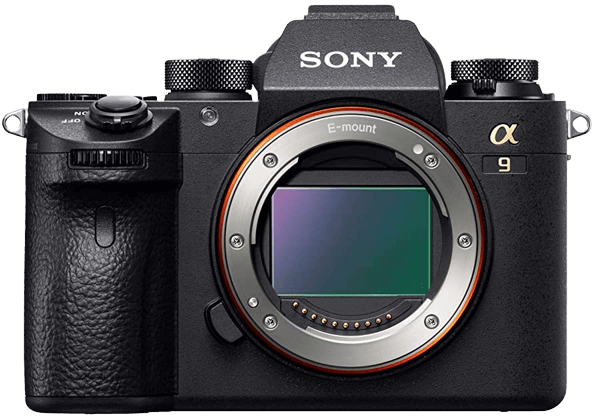
- 24.2MP full-frame stacked CMOS sensor
- 20fps continuous shooting with autofocus
- 693-point phase-detection autofocus
- Blackout-free electronic viewfinder
- 5-axis in-body image stabilization
Let’s dive right in. The Sony A9 II stands out as the pinnacle of DSLR cameras for sports action shots. Its 20fps burst shooting, without any viewfinder blackout, makes it a game-shooting machine. Not to mention, its auto-focus system outshines the competition, capable of processing up to 60 calculations per second. These unique features make it a must-have for any sports photographer.
That’s right. That about covers the wonderful Sony A9 II; however, the maker has done an amazing job with different highlights helpful for sports shooters, similar to the implicit 5 GHz Wi-Fi for super-quick picture movement, identical to another mechanical shutter designed with super-low vibration, identical to… well. You get the thought. This is an exceptional accomplishment in camera design.
Sony a9 is a fast, full-outline mirrorless intended to clash with Canon and Nikon’s leader proficient DSLRs. Today, we observe that mirrorless items likewise dominate reportage, sports, and numerous other types. Simultaneously, for the more “portable” picture takers in games, weddings and different occasions (in contrast with those working for photograph organizations), the progress to A9 can become a specialized advance. A particular preferred position of the Sony ILCE-A9 is its speed. The a9 presents a high pace of burst of up to 20 edges/s and enormous support of up to 200 RAW frames, just as a fantastic ISO performance.
Even though keen methods of autofocus (for example, focusing on the eyes, Lock-on AF and need in the recognition of faces) require some time to acclimate to, they can encourage picture taker’s work. The 5-pivot adjustment in this crossover functions admirably (both for photographs and videos). I should state that it’s additionally incredible for video shooting. Full HD has 4K and slow-motion shooting of 100/120 frames/s. There is no support for S-Log profiles, so the remainder of the broad scope of highlights is safeguarded. Sony a9 should engage the admirers of consistent shooting. It is one of the best DSLR cameras by Sony for sports action shots on this list. You’ll see why when you shoot sports competition events, you can choose the best shots of running or jumping.
Pros
- EISA Award Winner
- dust and waterproof
- 5-axis stabilization
- high ISO performance
- wide dynamic range
- 4K-video shooting
Cons
- the pretty high price tag
- the display may overheat
- battery life could be better
4. Nikon D5 DSLR Camera
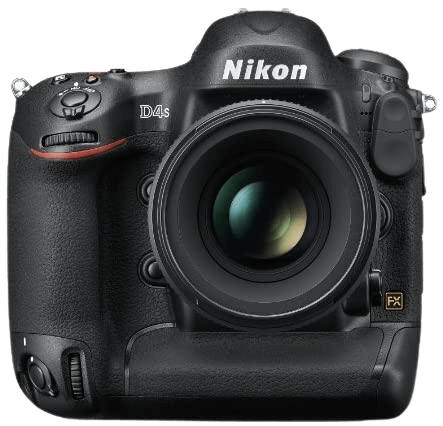
- 15.4MP FX-format (full-frame) CMOS sensor
- 153-point autofocus system
- 14fps continuous shooting
- 4K UHD video recording
- Built-in Ethernet port
Another new release, the Nikon D5, houses a 20.8MP FX-format CMOS sensor, an EXPEED 5 processor, and 153-point Multi-CAM 20K stage recognize autofocusing.
Picture-takers needing to catch a quick-moving sporting event or creatures in the wild running at maximum velocities will be charmed by the 14 fps most extreme consistent edge rate with a repaired centre and mirror lock. For those craving complete auto introduction and centring, a slight drop to 12 fps catches the ideal activity-filled second with exact focusing.
Shooting nighttime wildlife feed times and night games will be easier with the local sensitivity range from ISO 100-102400 and the extended range of ISO 50-3280000. Picture takers who also work in video will be satisfied with the D5’s 4K UHD video-recording abilities. Wi-Fi connectivity is conceivable with the optional WT-6A transmitter.
Pros
- dust and waterproof
- top quality in low light
- tenacious focusing
- thoughtful ergonomics
- up to 200 frames in RAW
- high battery life
- an ideal sports DSLR
Cons
- no built-in Wi-Fi and GPS
- too advanced for beginners
5. Olympus OM-D E-M1 Mark III Black Camera
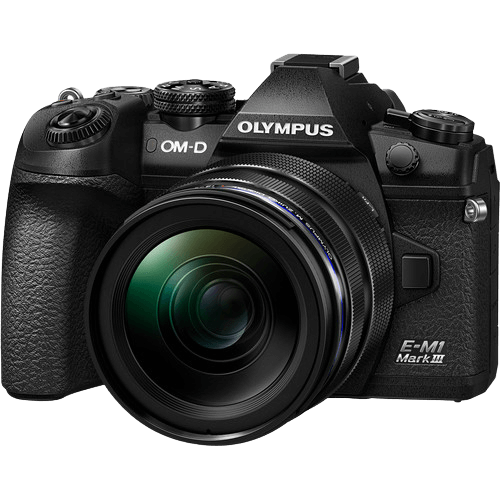
- 20.4MP Micro Four Thirds sensor
- 7.5 stops in-body image stabilization
- 18 fps continuous shooting with autofocus
- 50MP handheld high-res shot mode
- Dustproof, weather-sealed magnesium alloy body
A hotly anticipated update to the much-adored E-M1 Mark II, the Olympus OM-D E-M1 Mark III is one of the best DSLR cameras for sports shooting and, indeed, for essentially all other things.
Its numerous champion highlights synergize flawlessly—astounding 60fps burst RAW giving meets a liberal RAW shooting of 286 shots; unimaginably powerful in-body 7.5-stop picture stabilization meets very well-designed, ergonomic handling.
Admittance to the enormous stable of Micro Four Thirds lenses is no awful thing either—however, that implies the compromise of the little MFT sensor. Likewise, the ongoing news that Olympus is auctioning off its camera division means that the fate of the camera’s help is somewhat uncertain. In any case, this is a magnificent machine for sports shooting.
Pros
- Amazing burst and buffer
- Full weather-proofing
Cons
- Small sensor
- Uncertain future
6. Panasonic LUMIX FZ1000 4K Point and Shoot Camera
- 1-inch 20.1MP sensor (large for a point-and-shoot, good low-light performance)
- 16x Leica DC Vario-Elmarit lens (25-400mm equivalent, versatile zoom range)
- Bright f/2.8-4.0 aperture (great for low-light and background blur)
- 4K video recording (high-resolution video)
- 5-axis image stabilization (reduces camera shake)
While Panasonic has drawn out a couple of new cameras in this specific wheelhouse, specifically the FZ2000 and the FZ1000 II, this is the ideal purchase for generally beginner sports shooters.
Still broadly accessible, the Panasonic Lumix DMC-FZ1000 offers a stunning degree of usefulness at its cost. Its noteworthy 16x optical long-range lens delivers the products, regardless of whether the most extreme opening falls pretty strongly once you push the zoom past 170mm.
With numerous distinctive burst modes to play with and fulfilling, DSLR-style taking care of, the FZ1000 offers a lot of usefulness for any games picture taker, and its video highlights are an expert either, with 4K 30p video that looks extraordinary and can likewise be utilized to remove great stills. From the start, the Panasonic Lumix DMC-FZ1000 looks like Sony’s Cyber-shot DSC-RX10 with an enormous sensor and long zoom camera. However, there’s a point of reference inside the organization’s reach. It’s been a long time since the FZ50 was presented, so we can’t envision excessive individuals pausing. Yet, in sure regards, it shows Panasonic has, at last, made a substitution for that much-missed model. Overall, the FZ1000 can be seen as an amalgamation of the two cameras.
Like the RX10, the FZ1000 highlights a 20MP 1″- type MOS sensor (and the doubt must be that it’s a Sony chip); in any case, as opposed to the Sony’s 24-200mm comparable zoom range, the Panasonic comes to from 25 to 400mm same. To stop the entire thing turning out to be huge, the FZ1000’s focal point is slower than the Sony’s: its most extreme opening quickly drops from F2.8 towards F4.0 as you zoom in, yet there are a lot of individuals who’ll acknowledge that decline as a trade-off for the extra range.
Pros
- An array of burst options
- Cut-down price
- Future-proof 4K video recording with 100Mbps bitrate
- High-quality 8MP stills can be extracted from 4K video
- The large grip makes the camera comfortable to hold
- Overall operation is very responsiv
- 12fps continuous shooting
- A high-resolution XGA electronic viewfinder
- An electronic shutter allows for silent shooting
- In-camera Raw conversion
- Clean HDMI output
Cons
- Max aperture falls quickly
- Middling RAW buffer
- Bulky
- Easy to accidentally rotate focus/zoom ring
- Single dial operation adds an extra step when adjusting exposure
- Use of rear dial during video recording can be picked up by the microphone
- No Auto ISO in movie mode
- Lacks built-in ND filter
- 1080/24p only available using AVCHD codec at 24Mbps bit rate
7. Nikon COOLPIX P950 Camera

- 83x optical zoom (capture distant subjects)
- 16MP sensor (good image quality for everyday photos)
- Vibration Reduction (VR) image stabilization (sharp photos at zoom)
- 4K video recording (capable video option)
- Electronic viewfinder (helpful for composing at zoom)
It’s simply… a gigantic long-range zoom lens, right? If you’ve ever needed to remain along the edge of a football field and zoom so far that you can see a player’s follicles (and truly, who hasn’t?), the Nikon P950, with its 83x optical zoom, is the camera for you?
Somewhat more reasonable than the lead P1000, this noteworthy camera can bring even the most inaccessible subjects within easy reach. There are a couple of sharpness issues at the telephoto end, especially in case you’re working at high ISO settings; however, truth be told, it’s significantly more usable than it has any privilege to be.
The Nikon Coolpix P950 dominates for its epic zoom reach and lens quality, yet its picture quality is baffling in 2021. Should you have this much zoom reach? Still, the cost is difficult to legitimize. From the start glance, you’d be excused to speculate that the P950 was a DSLR camera, given its mass and outside plan. In any case, the camera and lens are a solitary fixed unit and can’t be isolated. Even though the P950 is marginally more significant than the P900 at 140.2 x 109.6 x 149.8mm, it’s considerably more modest than the truly weighty P1000 and lighter at 1005g. Even this size and weight is more than a DSLR like Nikon’s D5600 furnished with an 18-55mm unit lens.
Pros
- 83x optical zoom
- Portability vs. zoom reach
- Good ergonomics
- 4K video and quality EVF
- Enormous zoom range
- Useful stabilization
Cons
- Small,
- unimpressive sensor
- Sharpness issues at telephoto
- Disappointing image quality
- Do you need 83x zoom?
- Huge price tag
8. Canon DSLR Camera [EOS 90D]
- 32.5MP APS-C CMOS sensor (high-resolution images)
- 45-point all-cross-type autofocus system (fast and accurate focus)
- Up to 10fps continuous shooting (freeze action)
- 4K video recording (high-quality videos)
- Intelligent optical viewfinder (comfortable for composing)
Some have questioned the need for the humble DSLR in the age of the mirrorless camera, yet Canon emerged ready to take care of business with the flexible, very well-designed Canon EOS 90D.
It’s a do-it-all DSLR intended to work well in diverse shooting circumstances, quick enough for sports picture takers while also flaunting rough weatherproofing for open-air use. Its modern metering system helps nail the presentations in JPEG mode, which is valuable, as the RAW cushion is slightly restricted, in contrast to the opposition. Shockingly for a DSLR, the EOS 90D makes its mark in Live View mode utilizing the LCD, with incredible touchscreen controls and a robust Live View autofocus system.
There are aggravations and impediments with any camera, and we can choose a couple with the EOS 90D – however, this best DSLR camera for action shots capacities are so tremendous and comprehensive that you can’t anticipate marvels. We want a greater cradle limit, we’d like twin card openings, we’d like bunches of things – yet this camera accomplishes such a great deal and does it so well at an aficionado camera value point that it merits its high rating.
This is Canon’s first camera to follow another energizing improvement in advanced cameras – joining high resolution with high frame rates. Not only does the EOS 90D beat any APS-C Canon before it for megapixels, but it can do this at ten casings for each second. Previously, the solitary APS-C Canon equipped for this was the EOS 7D Mark II, a far-and-away games model whose future presently looks unsure. The EOS 90D additionally shoots 4K video – and not in the aggravating yield mode recently observed on Canon cameras, however utilizing the entire sensor width finally. You don’t get a moment crop factor when you change to 4K video, and your wide lenses remain ‘wide’!
There’s something else worth mentioning as well. The EOS 90D utilizes Canon’s Dual Pixel CMOS AF framework, which has an extraordinary impact on its mirrorless cameras. So, when you switch the EOS 90D to live view mode, it has no self-adjustment weakness at all compared with a mirrorless camera. The EOS 90D is the equivalent of any best DSLR camera for sports action shots, yet with the upside of an optical viewfinder.
Pros
- Great Live View autofocus
- 216-zone metering system
- Optical viewfinder
- Size and ‘heft’
- Vari-angle touchscreen
- Uncropped 4K
Cons
- Unimpressive buffer
- Small jump from 80D
- 120fps video S-AF only
- Limited buffer capacity
- Not much gain from 32MP
9. Fujifilm X-T4 Mirrorless Camera
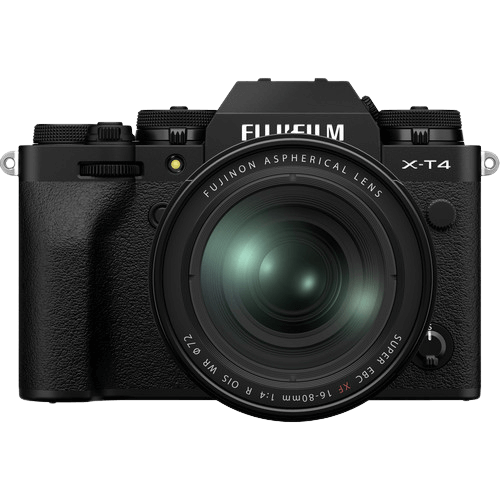
- 26.1MP APS-C X-Trans CMOS 4 sensor (excellent image quality)
- 5-axis in-body image stabilization (sharp photos at slower shutter speeds)
- Fast hybrid autofocus system (accurate focus for photos and videos)
- Up to 15fps continuous shooting (freeze fast action)
- 4K video recording at 60fps (high-quality, smooth video)
- Fully articulating LCD touchscreen (flexible shooting positions)
Something beyond an update to the X-T3, something other than another mirrorless APS-C camera – the Fujifilm X-T4 is perhaps the best DSLR camera for sports action ever constructed.
It’s phenomenal to deal with, producing perfect, lively pictures straight from the camera. Quick burst shooting, a significant cradle (all things considered, enormous for JPEGS), incredible high-ISO execution, a fabulous stable of X-framework focal points – it has it just for sports shooters. Any negatives? Indeed, a ton of consideration was paid to the (splendid) 4K video on the X-T4 and keeping in mind that this is all to the great, it implies that the asking cost is somewhat high in case you’re just planning to shoot stills.
We can’t resist the urge to give the Fujifilm X-T4 a five-star rating. All we needed in the X-T3 is here, remembering for body adjustment, a vari-point touchscreen show, and better battery life. We need a more significant amount (obviously), remembering better support profundity for nonstop shooting mode, yet that would be good to beat all. The X-T4 isn’t only a staggering stills camera. It additionally has front-line 4K video execution, with 60p 10-digit inside chronicle. It’s simply a disgrace Fujifilm dropped the earphone attachment (you’ll need an adaptor now).
Pros
- Images look fantastic
- Big JPEG buffer
- Sensor-shift stabilization
- 6.5-stop in-body stabilization
- Classic controls and layout
- 60p 10-bit 4K internal video
Cons
- Pretty expensive for APS-C
- The EOS M6 II has more megapixels
- Complex burst & video fps options
- No sensor advances over the X-T3
10. Canon EOS Rebel T6i Digital SLR Camera
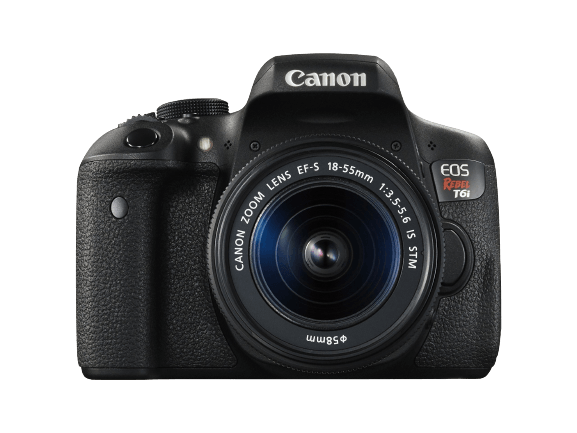
- 24.2MP APS-C CMOS sensor (good image quality for APS-C)
- Vari-angle touchscreen LCD (flexible shooting positions)
- DIGIC 6 image processor (capable performance)
- 5fps continuous shooting (capture some action)
- Full HD video recording (capable video option)
Canon Rebel T6i (or 750D external in the US) is a sweet decision from numerous points of view. It is the best Rebel yet. We murmur about this expression about once every year. This time, we genuinely mean it by a factor of two.
The Canon EOS Rebel T6i, just like its friend the T6s (known as the 750D and 760D outside of the US), both components another 24.2MP APS-C CMOS sensor (up from 18MP on the T5i/700D) combined with another 7560 pixel RGB + IR metering sensor for more precise metering. Although the two cameras are fundamentally the same, there are additionally unmistakable contrasts, so each will get its own review. You can learn about the T6s herCanon’sn’s new Hybrid CMOS AF III, which uses sensor-based stage location focuses for sped up and exactness in live view. Canon guarantees that the performance of Hybrid CMOS III should be near that of Dual Pixel AF (found in the EOS 70D and 7D II). With the mirror down, the Rebels T6i utilizes a similar 19-point stage identification AF as the 70D, which speaks to a tremendous improvement over the 9-point AF framework in the T5i. The ISO range stays as before as its archetype, 100-12800, expandable up to 25600.
While the T6i shares many centre highlights with the T6s, the client experience on the T6i is fundamentally the same as past Rebels. Interestingly, the T6s pick up some highlights that they truly saved fCanon’sn’s more devotee models. These incorporate a top LCD screen – the first on any Rebel – a Quick Control dial on the back, and an eye sensor to stop the LCD board when shooting with the viewfinder. The T6s additionally offer Servo AF in Live View, which considers ceaseless AF in burst mode. The last preferred position is tT6s’6s’ capacity to record HDR motion pictures continuously, a conceivably clever element for sprouting producers. Accordingly, the T6s will cost $100/£50/€60 more than the T6i. It is ranked last in our list of the best DSLR cameras for sports action shots in 2021.
Pros
- budget-friendly
- great work in Auto mode
- articulated touch screen
- 5 fps continuous shooting
- a good option for beginners
Cons
- small buffer in RAW
- its kit lens isn’t good for sports

